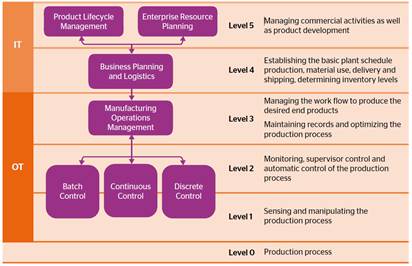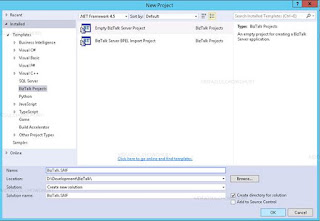Database Testing With DBUnit
DBUnit is an Open Source Database Testing Framework which was created by Manuel Laflamme. DBUnit is a Database Unit Testing Framework to Test Database Driven Classes, Procedures or Functions. NUnit, MVC .NET/Visual Studio testing platforms can be used to build a standard unit test suite. Developer should create a dataset, defined within an XML file, and then extends one of a number of parent classes to inherit pre-defined functionality in order to use the framework. An IDbConnection implementation to connect to the database, then DbUnit.NET can be used to test the data access code.
- UPDATE
- TRUNCATE
- INSERT
- REFRESH
- DELETE
- CLEAN_INSERT
- DELETE_ALL
- NONE
- Composite Operation
- Transaction Operation
- Identity Insert Operation
OracleDatabase MsSQL MySQL IbmDB2 IbmInformix H2 HypersonicSQL | PostgreSQL SybaseSQL InterBase OpenBase8 SapDB/MaxDB Derby FrontBase |
HOW TO WRITE A DBUnit TEST CASE?
If the DBUnit Test Class Name is DbUnitTestCase then the Data Set name has to be DbUnitTestCaseDataset.xml and has to be in the same folder. And, here is the example of flat XML DataSet:
This can be converted to flat XML like this:
< messageid ="34" msgcontent="”" messagethreadid="22" attachmentlink="””" ownerid="10/">
2. Create a Test Class and Extend DbUnitTestCase:
using System;
using System.Data;
using System.Data.SQLite;
using DbUnit.Framework;
using NUnit.Framework;
namespace MyDbUnitTestFrameWork
{
[TestFixture]
public class MyDBUnitTestCase1 : DbUnitTestCase
{
private IDbConnection connection = null;
3. Implement Setup and TearDown:
If we use the Flat XML, then the Setup method of the data set would be:
[SetUp]
public void SetUp()
{
dataset = new EmbeddedFlatXmlDataSet(this.GetType());
}
But, if we use Structed XML, then the Setup method of the data set would be:
[SetUp]
public void SetUp()
{
dataset = new EmbeddedStructuredXmlDataSet(this.GetType());
}
[TestFixtureSetUp]
public void SetUpFixture()
{
SQLiteConnection.CreateFile("MyLocalDB.db");
connection = new SQLiteConnection("Data Source= MyLocalDB.db");
connection.Open();
CreateTables();
PrimaryKeyFilter pkfilter = new PrimaryKeyFilter();
pkfilter.Add("Message", new PrimaryKey("id"));
pkfilter.Add("Thread", new PrimaryKey("id"));
base.PKFilter = pkfilter;
base.DatabaseHandler = new GenericDatabaseHandler(this.connection);
}
[SetUp]
public void SetUpTestCase()
{
base.SetUp();
}
[TestFixtureTearDown]
public void TearDownFixture()
{
connection.Close();
connection.Dispose();
connection = null;
}
[TearDown]
public void TearDownTestCase()
{
base.TearDown();
Assert.AreEqual(0, Count("select count(*) from Message"));
Assert.AreEqual(0, Count("select count(*) from Thread"));
connection.Close();
}
4. Implement Test method:
[Test]
public void TestQueryMessage()
{
Assert.AreEqual(1, Count("select count(*) from Message"));
Assert.AreEqual(1, Count("select count(*) from Thread where id = 1"));
}
So, a sample DUnit .NET Test Class should look like:
using System;
using System.Data;
using System.Data.SQLite;
using DbUnit.Framework;
using NUnit.Framework;
namespace MyDbUnitTestFrameWork
{
[TestFixture]
public class MyDBUnitTestCase1 : DbUnitTestCase
{
private IDbConnection connection = null;
[TestFixtureSetUp]
public void SetUpFixture()
{
SQLiteConnection.CreateFile("test.db");
connection = new SQLiteConnection("Data Source=test.db");
connection.Open();
CreateTables();
PrimaryKeyFilter pkfilter = new PrimaryKeyFilter();
pkfilter.Add("people", new PrimaryKey("id"));
pkfilter.Add("Thread", new PrimaryKey("id"));
base.PKFilter = pkfilter;
base.DatabaseHandler = new GenericDatabaseHandler(this.connection);
}
[TestFixtureTearDown]
public void TearDownFixture()
{
connection.Close();
connection.Dispose();
connection = null;
}
[SetUp]
public void SetUpTestCase()
{
base.SetUp();
}
[TearDown]
public void TearDownTestCase()
{
base.TearDown();
Assert.AreEqual(0, Count("select count(*) from Message"));
Assert.AreEqual(0, Count("select count(*) from Thread"));
}
[Test]
public void TestSomething()
{
Assert.AreEqual(2, Count("select count(*) from Message"));
}
[Test]
public void TestSomethingElse()
{
Assert.AreEqual(1, Count("select count(*) from Message where id = 1"));
}
[Test]
public void TestMessage2()
{
Assert.AreEqual(1, Count("select count(*) from Message where id = 2"));
}
public void TestInvalidMessage()
{
Assert.AreEqual(0, Count("select count(*) from Message where id = 7"));
}
[Test]
public void TestThread()
{
Assert.AreEqual(1, Count("select count(*) from Thread"));
Assert.AreEqual(1, Count("select count(*) from Thread where id = 1"));
}
{
ExecuteDML("create table Message (id integer primary key, givennames varchar2(50), surname varchar2(50))");
ExecuteDML("create table Thread (id integer primary key, head integer, spouse integer)");
}
{
using (IDbCommand cmd = connection.CreateCommand())
{
cmd.CommandText = dml;
cmd.ExecuteNonQuery();
}
}
{
int result = -1;
using (IDbCommand cmd = connection.CreateCommand())
{
cmd.CommandText = sql;
using (IDataReader reader = cmd.ExecuteReader())
{
if (reader.Read())
{
result = reader.GetInt32(0);
}
}
}
return result;
}
}
}

Figure 7: DBUnit Test Result using NUnit
DBUnit Benefits:
- DBUnit provides a stable framework to create and adopt Database Test cases with minimal effor
- It can manage the state of database through the test’s life cycle
- At the end of testing the database can be placed back into its pre-test state
- A database can be populated with a desired data set before a test
- DBUnit test can easily automated by controlling major dependencies
- DBUnit test can be performed utilizing most types of database objects (Tables, Views, Stored Procedures)
- DBUnit Tests do not require manual intervention between tests
- DBUnit Test results doesn’t need manual interpretation
- Code stability increases in a Team environment
- Easy to Learn and Implement
- Wide range of support for standard databases
- DBUnit documentation is pretty well defined
- DBUnit tests are easily manageable
- It is easier to generate the seed data using the dump feature
- Primary test data is XML but it is also possible to create test cases for standard databases
- Test Data generation plan is absent and so have to create and refresh the test dataset when Actual schema changes and seed and output data could be different
- Primary support for XML Dataset is Flat XML and need to have all columns defined in the first row
- BBUnit does not support multiple Resultset
DBUnit Location: http://dbunit-net.sourceforge.net/GettingStarted.html



Hi! Thank you for posting, information about DBUnit.NET is very limited at this time.. How would you advice us to go about MS SQL testing? I noticed that the DBUnit.NET website only used SQLite as an example.
ReplyDeleteDatabase testing with DbUnit is a valuable practice in software development. DbUnit simplifies the setup, verification, and teardown of database data for testing purposes. Device Streaming Slow It ensures data consistency, helps identify issues early.
ReplyDelete